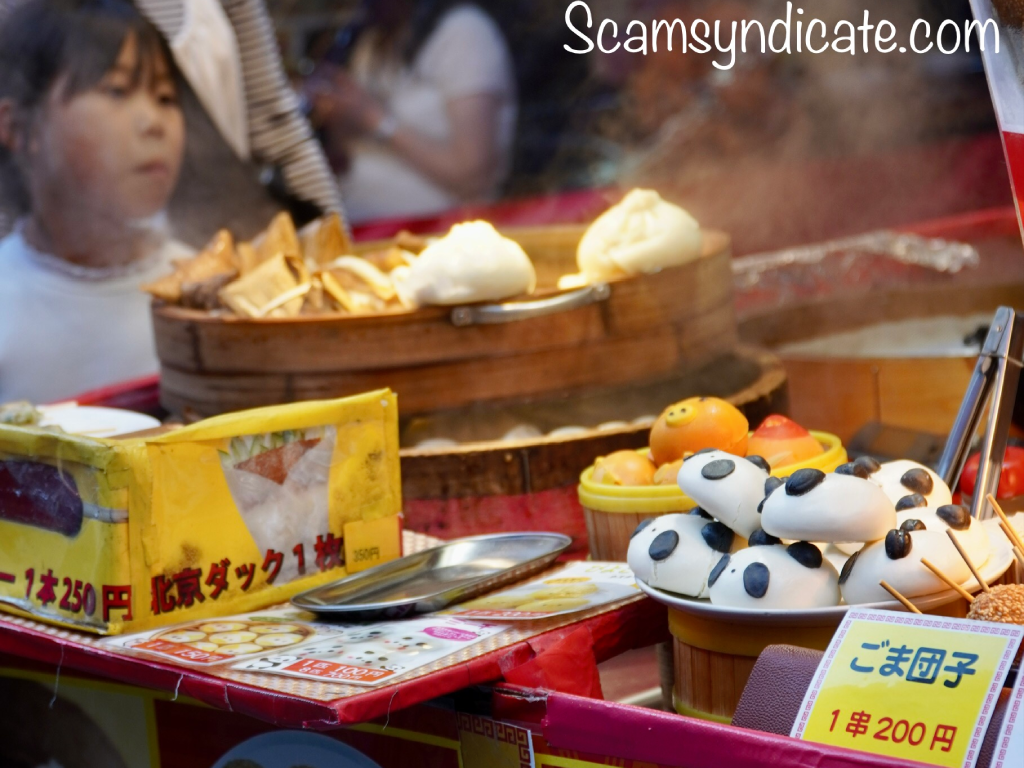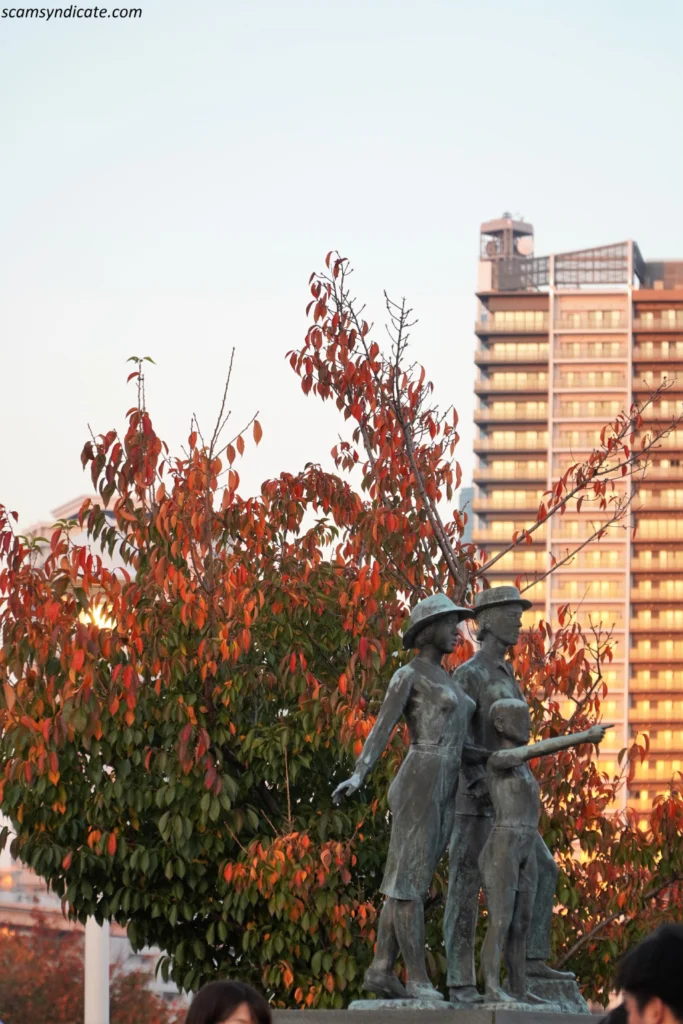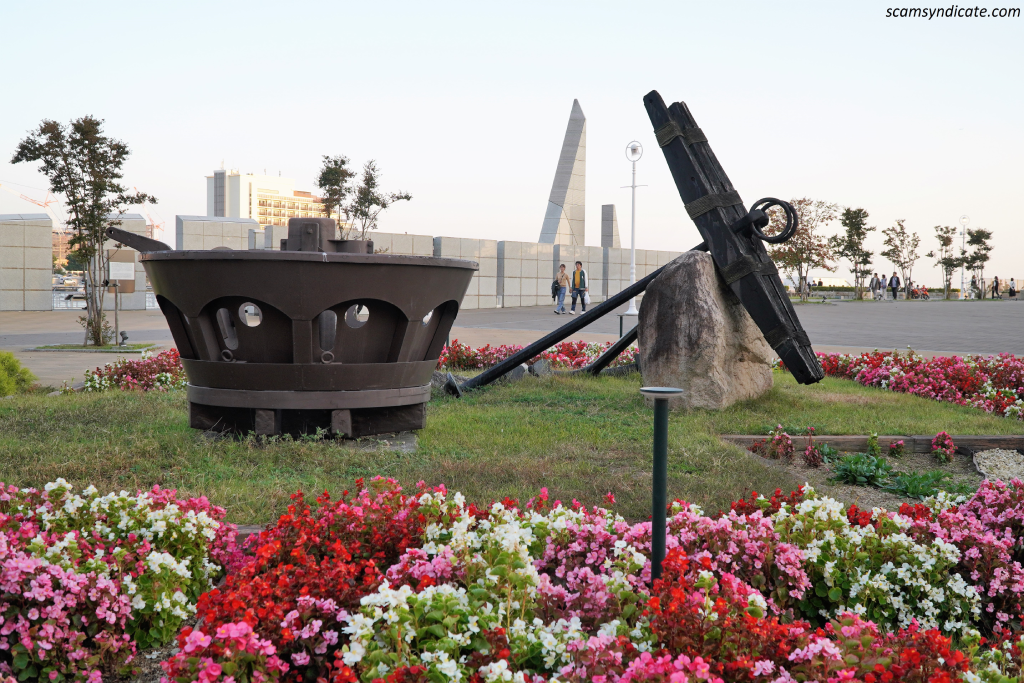Travel in November 2023 | 2023年十一月的旅行
Japan 日本 🇯🇵
From the snow-capped peaks of Hokkaido to the coral reefs of Okinawa, Japan is a mesmerizing tapestry of timeless rituals and futuristic visions—where Shinto shrines stand in the shadow of neon skyscrapers, and bullet trains whisk travelers between 12th-century temples and robot-staffed hotels. In Kyoto, geishas still glide through Gion’s lantern-lit alleys, while Tokyo’s Akihabara district pulses with anime culture and AI cafes. The Japanese genius for harmony reveals itself in every detail: a single Kyoto tea ceremony distills a philosophy of mindfulness, while a Tokyo convenience store bento box becomes a masterpiece of culinary precision. Whether soaking in an onsen under starry skies, hiking the Nakasendo Trail’s ancient cobblestones, or marveling at Miyajima’s floating torii gate at high tide, Japan offers endless moments of “omotenashi” (heartfelt hospitality) that linger in memory long after departure. With 23 UNESCO World Heritage Sites, 200 Michelin-starred restaurants in Tokyo alone, and four distinct seasons each celebrated with poetic intensity, Japan isn’t just a destination—it’s a sensory pilgrimage that recalibrates how you see the world.
从北海道的雪峰到冲绳的珊瑚海,日本如同一幅古老仪式与未来幻想交织的画卷——神社鸟居与霓虹大厦比邻而立,新干线在千年古寺和机器人酒店间飞驰。京都祇园的灯笼小径中,艺伎的身影依然摇曳;而东京秋叶原的动漫文化与AI咖啡馆碰撞出奇幻火花。日本人对和谐的追求体现在每个细节里:一场京都茶道可窥见侘寂哲学,而便利店便当竟能成为料理艺术的巅峰。无论是星空下泡温泉,踏上古道中山道的斑驳石阶,还是见证涨潮时严岛神社浮于海上的朱红鸟居,日本无处不在的”おもてなし”(以心待客)总让人离去后久久回味。23处世界遗产、仅东京就拥有的200家米其林餐厅,以及对四季更迭近乎诗意的崇拜,让日本不仅是一个旅行地,更是一场重塑世界观的感官朝圣。
Kansai Japan 日本关西
Steeped in history and tradition, Japan’s Kansai region is where the soul of the nation comes alive—from the ancient temples of Kyoto to the bustling streets of Osaka and the sacred deer of Nara. Kyoto, the former imperial capital, enchants visitors with its golden Kinkaku-ji Pavilion, serene bamboo forests of Arashiyama, and geisha performances in Gion. Osaka, the “Kitchen of Japan,” is a food lover’s paradise, offering savory takoyaki (octopus balls), crispy kushikatsu (deep-fried skewers), and the vibrant atmosphere of Dotonbori’s neon lights. Nara, home to the world’s largest bronze Buddha at Todai-ji Temple, invites travelers to stroll through Nara Park alongside friendly deer, considered sacred messengers of the gods. Kobe dazzles with its legendary beef and picturesque harbor views, while Kansai’s spiritual heart, Mount Koya, offers serene temple lodgings and morning prayers with Buddhist monks. Whether savoring matcha in a Kyoto teahouse, exploring Osaka Castle’s samurai history, or soaking in an onsen in Arima, Kansai blends timeless elegance with modern energy, making it an unforgettable journey into Japan’s cultural and culinary heritage.
作为日本文化的发源地,关西地区完美融合了历史底蕴与现代活力——从京都的古寺到大阪的喧嚣街巷,再到奈良的神鹿。古都京都以其金碧辉煌的金阁寺、岚山静谧的竹林和祇园的艺伎表演令人着迷。有”天下厨房”之称的大阪是美食天堂,章鱼烧、串炸和道顿堀的霓虹招牌让人流连忘返。奈良的东大寺供奉着世界上最大的青铜佛像,而奈良公园中悠闲漫步的鹿群,被视为神的使者。神户以传奇的和牛与迷人的海港景色闻名,而关西的灵性中心高野山则提供寺庙住宿与晨间诵经体验。无论是在京都茶室品抹茶、探索大阪城的武士历史,还是在有马温泉放松身心,关西将永恒优雅与现代活力完美结合,带领游客深入感受日本的文化与美食精髓。
12D11N trip to Kansai Japan Part 1
🚆 Day 1-2: Kobe Highlights
Arrived at Kansai Airport from Singapore and rested well for the adventure ahead.
⛩️ Morning: Shrine & Wagyu Feast
Checked into a hotel near Sannomiya Station and started our “stamp hunt”!
First stop: Ikuta Shrine, a serene oasis in the city center. Then indulged in legendary Kobe beef – expensive but unforgettable!
🛍️ Afternoon: Motomachi Exploration
Took the City Loop Bus (CL15) to Motomachi:
– Free observatory at Daimaru Dept. Store
– Shopping at UNIQLO and local boutiques
– Snacked through Nankinmachi (Kobe Chinatown)
🌉 Evening: Harbor Romance
Continued to Meriken Park (CL16) for stunning harbor views, then Harborland (CL2) for night photos of Kobe Port Tower and the Ferris wheel. Ended the day shopping at Sannomiya Center Street (CL6).
🏛️ Day 3: Cultural Deep Dive
🌅 City Views
Visited Kobe City Hall’s 24F observatory for panoramic views after exploring modern skyscrapers.
🏰 Ijinkan District (Yamate Pass = Bargain!)
Hop on the vintage-style City Loop Bus (Stop CL10) to Kitano Ijinkan Street, where 25 Western-style buildings from the Meiji Era form an open-air “World Architecture Museum.” With the Yamate Discount Pass (¥900 for 8 attractions), we time-traveled through these gems:
Uroko House & Observatory The 1895 merchant’s house features magical fish-scale cladding—actually fireproof tech using seawater-soaked cedar! Its rooftop offers panoramic views stretching to Awaji Island.
Yamate Hachiban-kan This 1905 German residence dazzles with Art Nouveau stained glass and tile stoves. Don’t miss the basement exhibit on Kobe’s first beer brewery!
Kitano Foreigners’ Club The 1880s social hub still has its ballroom chandeliers. Fun fact: Tom Cruise stood on its balcony in The Last Samurai.
Former Chinese Consulate The 1902 Sino-Baroque building hides surprises: ROC emblems in railings, and a Qing-dynasty dragon wall—the last in Kansai!
Hidden Gem Every Saturday at 3pm, Uroko House offers “Meiji Costume Experience” (¥500). Grab the limited-edition “Ijinkan Cube” puzzle at the Weathercock House!
🌿 Nunobiki Herb Garden
Pro route:
1️⃣ Ropeway from ANA Crowne Plaza
2️⃣ Walk down through flower gardens
3️⃣ Cable car return from Windy Hill Station (closes at 5PM!)
Perfect spot for photos and relaxation with harbor views!
🍵 Day4: Uji’s Matcha Wonderland
(Story continues…)
12天11夜日本关西之旅第一部分
🚆 首二日行程:神户经典打卡
晚上从新加坡飞抵大阪关西机场,在机场附近好好休息,为接下来的旅程养精蓄锐。
⛩️ 上午:神社与和牛盛宴
第二天一早,直奔神户!入住三宫站附近的酒店后,立刻开启「盖章猎人」模式——日本的火车站和景点常有精美的纪念章,连街边的艺术井盖都值得拍照打卡!
第一站是生田神社,这座千年神社隐藏在繁华市区,朱红色的鸟居与都市高楼形成奇妙对比。参拜完刚好赶上早午餐时间,既然来到神户,怎能错过传说中的神户牛?我们在三宫站附近找了一家餐厅,牛肉入口即化,油脂香气浓郁,虽然价格不菲,但绝对值得一试!
🛍️ 下午:元町散策
搭乘城市环线巴士(CL15站)前往元町商店街,先冲上大丸百货10楼免费观景台,可惜视野一般,不过没关系——接下来的购物时间更让人期待!在优衣库(元町店)和周边商店血拼一番后,步行到南京町(神户中华街),这里充满怀旧的中国风情,小笼包、烧卖、珍珠奶茶……各种小吃让人眼花缭乱。
🌉 傍晚:港区浪漫
继续搭乘环线巴士(CL16站)前往美利坚公园,这里是神户港的精华所在,碧海蓝天搭配现代艺术装置,随便一拍都是明信片级美景!天黑后,转战临海乐园(CL2站),拍摄神户港塔和马赛克摩天轮的璀璨夜景。摩天轮灯光倒映在海面上,浪漫满分!顺道逛逛Umie Mosaic商场,可惜面包超人博物馆已经关门(带小朋友的话记得早点来哦~)。最后搭巴士回到三宫中心街(CL6站),这里聚集了各种药妆店、服饰店和居酒屋,完美结束神户的第一天!
🏛️ 第三天行程:异国风情深度游
🌅 晨间:城市全景
趁神户市政厅还没开门,我们先去附近的美利坚大厦、海岸大厦、新光大厦打卡,感受神户的现代风貌。接着直奔神户市役所24楼展望台,360度全景视野,整座城市尽收眼底!
🏰 异人馆巡礼(山手通票超值!)
搭乘复古造型的City Loop巴士(CL10站)前往北野异人馆街,这条坡道上的”万国建筑博物馆”保存着25栋明治时期的外国领事馆和洋风建筑。我们购买了超值的山手折扣通票(成人900日元,可参观8处设施),重点探访了这些穿越时空的珍宝:
鱼鳞之家 & 展望台 这栋1895年建造的商馆有着魔幻的鱼鳞状木制外墙,其实是明治时期的”防火黑科技”——杉木板浸泡海水后弯曲成型。顶楼的360度展望台能将神户港尽收眼底,天气好时甚至能看到淡路岛!
山手八番馆 1905年建成的德国贸易商住宅,内部完整保留着新艺术风格彩窗和瓷砖壁炉。地下室展示了明治时期德国啤酒酿造设备,原来神户的啤酒文化从这里起源!
北野外国人俱乐部 1880年代在日外国人的社交中心,大厅的水晶吊灯曾照亮过无数场假面舞会。别错过二楼阳台——电影《最后的武士》曾在此取景。
前中国领事馆 这栋1902年建造的中华巴洛克建筑藏着惊人细节:青天白日徽章被巧妙融入雕花栏杆,后院的”龙壁”是关西地区仅存的清代砖雕珍品。
隐藏彩蛋 每周六下午3点,鱼鳞之家有”明治服装体验”(500日元),能穿着复古洋装拍大片!记得在风见鸡馆买限定”异人馆魔方”,六面拼出不同洋馆造型~
🌿 布引香草园攻略
步行至布引索道站,搭乘缆车上山前往布引香草园。建议路线:
1️⃣ 从ANA皇冠酒店旁入口进,搭索道直达山顶
2️⃣ 漫步下山欣赏花田
3️⃣ 在风之丘站搭缆车返回(注意:下午5点关门,排队人多,建议早点去!)
香草园四季花开,远眺神户港,是拍照和放松的绝佳地点!
🍵 Day4:宇治·抹茶时光机
(故事待续…)
Kobe Japan 日本神户
Nestled between the Rokko Mountains and Osaka Bay, Kobe is Japan’s sophisticated international port city that dazzles with its cosmopolitan charm and natural splendor. World-famous for its melt-in-your-mouth Kobe beef—raised with beer massages and classical music—the city also boasts a vibrant foreign influence seen in its historic Kitano Ijinkan district’s Western-style mansions and the red-steel Kobe Port Tower. The 1995 Great Hanshin Earthquake Memorial Park stands as a poignant tribute to resilience, while the sparkling lights of the Kobe Luminarie festival each December transform the city into a winter fairy tale. Take the cable car up Mount Rokko for panoramic views of the “Ten Million Dollar Night View,” soak in the therapeutic waters of Arima Onsen (one of Japan’s oldest hot springs), or stroll through the aromatic sake breweries of Nada District. With its perfect blend of urban sophistication, culinary excellence, and breathtaking nature, Kobe offers a uniquely refined Japanese experience—where every bite of marbled Wagyu and every harbor breeze whispers of elegance reborn from adversity.
夹在六甲山与大阪湾之间的神户,是一座兼具国际都会气质与自然雄奇的港城。以入口即化的神户牛肉(享受啤酒按摩与古典音乐育肥)闻名于世,这里还遍布着异国风情——北野异人馆的西洋建筑群与红色钢铁神户港塔交相辉映。1995年阪神大地震纪念公园诉说着重生的力量,而每年12月的光之祭典则将城市变成冬季童话。搭乘缆车登上六甲山,俯瞰”千万美金夜景”;浸泡在有马温泉(日本最古老的温泉之一)的疗愈之水中;或漫步滩五乡酒香四溢的清酒作坊。神户完美融合都市精致、美食艺术与壮丽自然,提供独一无二的日式优雅体验——每一口霜降和牛的脂香,每一缕海港的微风,都在低语着从逆境中涅槃的从容之美。
⛩️ Ikuta Shrine 生田神社


Nestled in the heart of Kobe’s bustling Sannomiya district, Ikuta Shrine is one of Japan’s oldest Shinto shrines with over 1,800 years of history. Dedicated to Wakahirume-no-Mikoto, the goddess of life and prosperity, this sacred oasis features a rare urban forest with 500-year-old camphor trees. The vibrant autumn foliage and traditional weddings held here create a magical contrast with the surrounding cityscape. Don’t miss the unique “heart-shaped ema” love charms popular with couples.
坐落在神户三宫繁华街区的生田神社拥有1800多年历史,是日本最古老的神社之一。供奉象征生命与繁荣的稚日女尊,神社内保留着珍贵的都市森林与500年树龄的楠木。秋天红叶季时,传统日式婚礼与摩登都市背景形成的奇妙反差尤为迷人。独特的”心形绘马”恋爱御守深受情侣追捧。
🛍️ Motomachi-dori 元町通


This 1.2km shopping arcade near Chinatown mixes century-old kimono shops with trendy cafes. Don’t miss the free (but mediocre) view from Daimaru Kobe’s 14F observatory – best for quick harbor glimpses between shopping.
中华街旁的1.2公里拱廊商店街,既有百年和服老铺也有网红咖啡店。大丸百货14楼免费观景台视野普通,适合购物间隙快速眺望港口。
🥟 Nankinmachi (Kobe Chinatown) 南京町


Kobe’s vibrant Chinatown “Nankinmachi” bursts with colorful gates and 100+ food stalls serving steamed buns and karaage. The central plaza features a nine-dragon wall and seasonal festivals like the dazzling Chinese New Year lantern displays.
神户中华街”南京町”以华丽牌坊和100多家小吃摊闻名,招牌肉包和炸鸡香飘四溢。中心广场的九龙壁与春节灯会最为热闹。
Pro Tip: Try “Kobe-style” pork buns at Nankinmachi’s oldest stall “Roushouki” since 1905!
美食贴士: 一定要尝南京町1905年开业的老字号”老祥记”神户风味肉包!
🌉 Meriken Park 美利坚公园
Kobe’s waterfront jewel Meriken Park blends maritime charm with modern design, featuring the iconic red Port Tower, Kawasaki World Museum, and the hauntingly beautiful Kobe Port Earthquake Memorial. Its name derives from “American Park” when this was a foreign settlement area. Nighttime illuminations transform the harbor into a glittering wonderland.
神户美利坚公园是融合海港风情与现代设计的滨水胜地,包含红色地标神户港塔、川崎世界博物馆及震撼的神户港震灾纪念公园。名称源自明治时期作为外国人居留地的”美国公园”历史。夜间灯光秀将港湾变成璀璨梦幻世界。
🚢 Kobe Maritime Museum 神户海洋博物馆
Shaped like sailing ships, this museum chronicles Kobe’s 1,300-year port history with ship models, navigation tools, and interactive exhibits. The adjacent “Kawasaki Good Times World” showcases motorcycles, helicopters, and Shinkansen bullet trains.
白帆造型的建筑通过船模、航海仪器和互动展项,讲述神户1300年港口史。毗邻的”川崎Good Times世界”展出摩托车、直升机和新干线列车等工业杰作。


🏨 Kobe Meriken Park Oriental Hotel (神户美利坚公园东方酒店)
Overlooking Kobe’s glittering harbor, this luxury hotel features wave-inspired architecture with floor-to-ceiling windows in all rooms. Its prime location connects directly to Meriken Park attractions, while the 14th-floor infinity pool offers stunning night views of Port Tower illuminations.
坐拥神户璀璨海港美景的豪华酒店,以波浪为设计灵感,所有客房配备落地窗。优越位置直通美利坚公园各景点,14楼无边泳池更可饱览神户港塔灯光秀的绝美夜色。
🏭 Kawasaki World Museum 川崎世界博物馆
Dive into Japan’s industrial prowess at this museum showcasing Kawasaki Heavy Industries’ innovations – from roaring motorcycles to cutting-edge robotics. The highlight is sitting in actual Shinkansen driver cabins and helicopter cockpits.
展示川崎重工科技成就的专题馆,从轰鸣的摩托车到尖端机器人应有尽有。最大亮点是能真实坐进新干线驾驶舱和直升机操纵室体验。


🗼 Kobe Port Tower 神户港塔
This 108m red steel hyperboloid tower (1963) offers 360° views from its observation deck 90m up. Its unique “Japanese drum” shape becomes a luminous beacon at night with seasonal light shows. A symbol of Kobe’s rebirth after WWII and the 1995 earthquake.
高108米的红色钢制双曲面塔(1963年建),90米展望台可360°纵览神户全景。独特的”日本鼓”造型在夜间上演季节灯光秀,象征二战后及阪神大地震后神户的重生。
📍 Be Kobe Monument “BE KOBE”粗体字样
This Instagram-famous sculpture near Meriken Park spells “BE KOBE” in bold letters, created after the 2018 Kobe Declaration to celebrate the city’s resilience and global spirit. Sunset shots with Port Tower in the background are quintessential Kobe memories.
美利坚公园旁的网红雕塑,以”BE KOBE”粗体字样展现2018《神户宣言》后的城市精神。以神户港塔为背景拍摄日落照片是经典打卡方式。


⚡ Kobe Port Earthquake Memorial Park 神户港震灾纪念公园
Preserving cracked piers and toppled lamps from the 1995 Great Hanshin Earthquake, this open-air memorial evokes the disaster’s devastation. The adjacent Disaster Reduction Museum details reconstruction efforts through immersive simulations.
保留1995年阪神大地震中断裂的码头与倾倒路灯的露天纪念馆。毗邻的防灾体验馆通过沉浸式模拟展示重建历程。
🛒 Umie MOSAIC 神户马赛克广场
Kobe Harborland Mosaic is a vibrant waterfront complex featuring boutique shops, gourmet restaurants, and entertainment venues with stunning harbor views. The romantic Mosaic Ferris Wheel illuminates the night with seasonal light displays, while the area’s cobblestone streets and European-style architecture create a charming atmosphere. Don’t miss trying the famous Kobe Pudding at local cafes!
神户马赛克广场是一个充满活力的海滨综合体,汇集精品店、美食餐厅和娱乐场所,坐拥迷人海港景色。浪漫的马赛克摩天轮随季节变换灯光秀,欧式建筑与石板路营造独特氛围。别忘了在咖啡馆品尝著名的神户布丁!

🎡 Mosaic Ferris Wheel 马赛克摩天轮
The 52.5m Mosaic Ferris Wheel offers breathtaking 360° views of Kobe’s skyline and harbor. Each climate-controlled gondola features different LED light themes at night, creating a magical “Kobe Jewelry Box” effect. A sunset ride provides the most spectacular vistas.
高52.5米的马赛克摩天轮可360°俯瞰神户都市与海港全景。夜间每节空调车厢呈现不同LED灯光主题,形成梦幻的”神户珠宝盒”效果。日落时分乘坐景色最为壮观。
Pro Tip: Buy a pudding at “Kobe Pudding Café” and enjoy it while riding the Ferris wheel for ultimate Kobe sweetness!
小贴士: 在”神户布丁咖啡馆”购买布丁,边乘坐摩天轮边品尝,享受双重甜蜜体验!
🏛️ Kobe City Hall 神户市政厅
The striking Kobe City Hall complex blends 1950s modernist architecture with contemporary design, featuring a 32-story main tower offering free observation deck views of Mount Rokko and the harbor. Its earthquake-resistant structure famously survived the 1995 Great Hanshin Earthquake intact.
神户市政厅建筑群完美融合1950年代现代主义与当代设计,32层主塔免费开放观景台可眺望六甲山与海港。其抗震结构在1995年阪神大地震中完好无损,成为建筑传奇。
🚢 Kobe Port Heritage Trail 神户港口遗产步道
This 2.5km waterfront walking route connects 19 historic sites from Kobe’s 1868 opening era, marked by bronze ship wheel motifs on sidewalks. Highlights include Shinko Brick Warehouse, former foreign trading houses, and the iconic Port Tower – with multilingual AR guides bringing Meiji-era port life to life through your smartphone.
这条2.5公里海滨步道串联神户1868年开港时期的19处历史遗迹,人行道上的青铜船舵图案为导引。从新港红砖仓库到旧外商馆群再到神户港塔,沿途可通过手机AR导览以多语言重现明治时期港口盛况。
🏢 Shinko Building 神户新港大厦 (神户新港ビル)
This 1932 red-brick warehouse turned cultural complex in Kobe’s harbor district blends industrial heritage with modern art galleries and craft beer pubs. Its iconic clock tower becomes a luminous landmark at night.
1932年建的红砖仓库改造的文化综合体,集工业遗产与现代艺术空间、精酿啤酒吧于一体,夜间钟楼变身璀璨地标。
⚓ Ship Kobe Kaigan Building 神户海岸大厦 (神戸海岸ビル)
Shaped like a ocean liner’s bow, this 1987 postmodern landmark houses fashion boutiques and the Kobe Port Museum with interactive exhibits on maritime history. The rooftop terrace offers 270° harbor views.
1987年建邮轮造型的后现代建筑,内含时尚店铺与展示港口历史的互动式博物馆,屋顶露台可270°俯瞰海港。
⛵ Naval Drills Office Trace Monument 神户游泳训练场纪念碑 (神戸水練場跡碑)
A modest stone marker commemorating Japan’s first Western-style swimming school (1870), where samurai once learned naval tactics. Located near Meriken Park with English explanation plaques.
纪念日本首个西式游泳学校(1870年)的石碑,武士曾在此学习海军战术,位于美利坚公园附近并配有英文说明牌。


🌿 Nunobiki Herb Garden 布引香草园
Perched on the slopes of Mount Rokko, Kobe’s Nunobiki Herb Garden is Japan’s largest hillside herb garden—a cascading tapestry of 75,000 aromatic plants spanning 200 varieties across 12 themed zones, accessible via the world’s longest herb garden ropeway (1.5km). Visitors ascend through clouds to the Sky Garden at 400m elevation, where the Glasshouse—a Victorian-style conservatory—showcases rare Mediterranean herbs and a butterfly paradise. Stroll through the Dream Garden’s lavender labyrinths, the Kitchen Garden’s edible flower patches, and the Rose Terrace with 150 heirloom varieties blooming May-November. The highlight is the Fragrance Museum, where you can create custom perfumes using garden-fresh essential oils. At the Herb Cafe, sip rosemary-infused lemonade while overlooking Kobe’s harbor, or time your visit for the Evening Illumination when the gardens transform into a twinkling wonderland. With its blend of horticultural splendor, panoramic views, and hands-on aromatherapy experiences, this mountain oasis offers a sensory escape just minutes from downtown Kobe—where every breeze carries a new fragrance and every turn reveals postcard-perfect vistas.
坐落于六甲山麓的布引香草园是日本最大山坡香草园,12个主题花田种植着200种共7.5万株芳香植物,搭乘全球最长的香草园缆车(1.5公里)即可抵达海拔400米的天空庭园。维多利亚风格的玻璃温室里,地中海稀有香草与蝴蝶共舞;漫步梦幻花园的薰衣草迷宫、厨房花园的食用花田,以及5-11月盛放的150种古典玫瑰露台。芳香博物馆可调制专属香水,而香草咖啡馆的迷迭香柠檬水佐以神户港全景最为惬意。若在夜间点灯季造访,整座花园便化作星光仙境。距市区仅数分钟车程,这里却似远离尘嚣——每阵风都捎来不同香气,每个转角都是明信片般的风景,是嗅觉与视觉的双重治愈。
🏘️ Kitano Ijinkan-gai 北野异人馆街
Step into a European fairytale at Kitano Ijinkan-gai, Kobe’s historic Western-style district where 19th-century merchant homes turned into museums. This hillside neighborhood preserves over 20 Victorian-era residences built for foreign traders during the port’s opening, featuring stained glass windows, antique furnishings, and rose gardens. The cobblestone streets offer perfect photo spots with Mount Rokko as backdrop.
漫步北野异人馆街犹如穿越到欧洲童话世界,这片山坡上的历史街区保留了20多栋19世纪外国商人建造的西洋馆。鹅卵石街道两侧的维多利亚风格建筑现多改为博物馆,彩绘玻璃、古董家具与玫瑰花园完美复刻明治时期神户开港时的国际氛围,六甲山为背景的街景堪称绝佳拍照点。
☕ Kitanocho Plaza 北野町广场
Nestled in the heart of Kobe’s historic Kitano district, Kitano-machi Plaza is a charming European-style square surrounded by Meiji-era Western houses. The cobblestone plaza features a picturesque fountain, seasonal flower displays, and open-air cafes perfect for enjoying Kobe’s famous afternoon tea sets. Every December, it transforms into a magical Christmas market with Germany-style wooden stalls selling mulled wine and handicrafts.
位于神户北野异人馆区中心的北野町广场,是一个被明治时期西洋建筑环绕的欧式风情广场。鹅卵石铺就的广场中央设有喷泉,季节花卉装饰与露天咖啡馆是品尝神户著名下午茶的理想场所。每年12月这里会变身梦幻圣诞市集,德国风格木屋摊位出售热红酒和手工艺品。
Local Tip: Buy the special “Rokko Yogurt” at the farm and enjoy it with Kitano-machi Plaza’s famous scones for ultimate Kobe-style picnic!
当地玩法: 在六甲山农场购买特制酸奶,搭配北野町广场著名的司康饼,享受最地道的神户野餐!


⛩️ Kitano Tenmangu Shrine 北野天满神社
Dedicated to the god of academics Sugawara no Michizane, this 949AD shrine hides a surprising secret – its “Lucky Cow” statue is believed to grant wishes when you rub the exam subject you need help with (math, English etc.) carved on its body. Students flock here during exam seasons, and the plum blossom festival in February is spectacular.
供奉学问之神菅原道真的北野天满神社创建于公元949年,藏有个有趣传统:抚摸”合格牛”雕像身上刻着不同学科(数学、英语等)的部位,据说能保佑考试顺利。考季时挤满参拜学子,2月的梅花祭更是美不胜收。


🇨🇳 Former Chinese Consulate in Kobe 神户旧中国领事馆
This 1892 neoclassical building witnessed early Sino-Japanese diplomacy, featuring a rare fusion of Qing Dynasty roof tiles and Western columns. The exhibition hall details Kobe’s Chinatown history and the consulate’s role in protecting overseas Chinese during WWII.
1892年建的新古典主义建筑,罕见融合了清代琉璃瓦与西洋立柱。展厅详述神户华侨史及二战时期领事馆保护侨民的事迹,是近代中日外交的重要见证。
🏠 Uroko House & Uroko Observatory 鱼鳞之家 & 鱼鳞展望台
The iconic “Uroko House” stands out with its unique dragon-scale patterned exterior walls. Inside this 1905 German-style residence, spiral staircases lead to an observation deck with panoramic harbor views. The preserved 1920s interior showcases exquisite Art Nouveau details and a fascinating collection of Meiji-era globes.
地标建筑”鱼鳞之家“以独特的龙鳞状外墙闻名,这栋1905年德式洋馆内的螺旋楼梯通往能眺望神户港的展望台。保存完好的1920年代室内装饰展现新艺术风格细节,收藏的明治时期地球仪尤为珍贵。


🏛️ Yamate Hachiban-kan 山手八番馆
This 1905 American colonial-style mansion is famed for its Tiffany-style stained glass ceiling and original Steinway piano. The “Hall of Mirrors” ballroom and wraparound veranda exemplify Taisho-era luxury. Seasonal concerts still utilize its exceptional acoustics.
1905年建的美式殖民风格山手八番馆,以蒂芙尼彩绘玻璃穹顶和施坦威古董钢琴著称。”镜厅”舞厅与环绕式回廊尽显大正时期奢华,至今仍举办季节性音乐会。
🎩 Kitano Foreigners Club 北野外国人俱乐部
Established in 1909 as Kobe’s first international social club, this British-style building retains its original billiard room and whiskey bar. The oak-paneled lounge displays historic photos of foreign merchants playing cricket on the nearby grass square.
1909年成立的英国风北野外国人俱乐部,保留着最初的台球室与威士忌吧。橡木墙面的休息室展示着当年外国商人们在草坪广场打板球的历史照片。
There are several exhibition halls below, but I didn’t go in.
还有下面几个展馆,我没进去。
📖 Kitano Monogatari-kan 北野故事馆 (北野物語の館 )
Originally a merchant’s home, this 1903 building blends Japanese and Western styles, featuring a unique tearoom with stained-glass sakura motifs and a hidden garden with hybrid rose varieties cultivated during the Meiji era.
1903年建,原为商人住宅,和洋混搭风格。独特的樱花彩绘玻璃茶室与明治时期培育的杂交玫瑰庭院是其亮点。
🇫🇷 French House 洋館長屋(法国馆)
Built in 1905, this Parisian-style mansion boasts a wrought-iron balcony where the original owner hosted champagne parties. The interior preserves a 1920s “Jazz Corner” with an antique gramophone collection.
1905年巴黎风建筑,保留1920年代”爵士角”与古董留声机,铸铁阳台曾举办香槟派对。
🇬🇧 England House 英国館
A 1907 Tudor-style residence famous for its authentic English afternoon tea served in Royal Albert china. The oak-paneled library displays first-edition British novels brought via Kobe port.
1907年都铎风格宅邸,提供皇家阿尔伯特瓷器盛装的英式下午茶,橡木书房藏有经神户港传入的英国小说初版本。
🎩 Kobe Trick Art Museum 神户魔法美术馆(神戸不思議な魔法の美術館)
Housed in a 1912 neo-Gothic building, this interactive museum features optical illusion artworks that “come alive” when photographed—like a floating vampire couch from the 1920s magic show era.
1912年新哥特建筑,互动错觉艺术展品拍照时会”活”过来,如1920年代魔术秀的悬浮吸血鬼沙发。
🏰 Former Drever House / Rhine House 莱茵之家 / 原德雷威尔宅(ラインの館)
This 1903 German chalet-style home showcases a remarkable “beer cellar” with 100+ vintage bottles and a mechanical cuckoo clock that still chimes hourly.
1903年德国木屋风格,拥有收藏百余瓶 vintage 啤酒的地窖和仍在报时的机械布谷鸟钟。
🏛️ Palastin House 异人馆帕拉斯廷之家(異人館パラスティン邸)
A 1916 Mediterranean villa with a mosaic-tiled courtyard where Syrian merchants once traded silk. The rooftop offers panoramic views of Mount Rokko.
1916年地中海别墅,叙利亚商人曾在此交易丝绸,马赛克庭院与六甲山全景阳台最负盛名。
💚 Moegi House 萌黄之馆(萌黄の館)
Named for its distinctive “young leaf green” color, this 1903 American colonial-style residence features the only original elevator from Kobe’s foreign settlement era.
因”新叶绿”外墙得名,1903年美国殖民风格建筑,保有神户外国人居留地时代唯一原装电梯。
🐓 Weathercock House / Former Thomas House 风见鸡馆 / 原托马斯宅(風見鶏の館 )
Kobe’s most iconic Ijinkan, recognized by its spinning rooster weathervane. The attic contains a secret children’s playroom with 1909 German-made toys.
神户最著名异人馆,标志性公鸡风向标下藏着1909年德国制造的儿童秘密游戏屋。
🇳🇱 Dutch House 荷兰馆(オランダ館)
A 1918 canal-house replica displaying Delft porcelain and a replica Dutch kitchen serving stroopwafels made with local Hyogo honey.
1918年运河屋复制建筑,展出代尔夫特蓝陶,复制荷兰厨房提供兵库县蜂蜜制作的焦糖华夫饼。
🇩🇰 Denmark House 丹麦馆(デンマーク館)
This 1906 Nordic cottage houses LEGO’s first Japanese exhibition (1954) and a working 19th-century Danish fireplace.
1906年北欧小屋,陈列1954年乐高日本首展品,仍可使用的19世纪丹麦壁炉是其灵魂。
🇦🇹 Vienna Austria House 奥地利维也纳之家(ウィーン・オーストリアの家)
A 1913 Secession-style mansion featuring gilded Mozart sheet music and the original Viennese coffee house chairs where Freud’s nephew once lectured.
1913年分离派风格,镀金莫扎特乐谱原件与弗洛伊德侄子曾讲学的维也纳咖啡椅值得细品。
🖼️ Plato Decorative Art Museum 意大利馆 / 柏拉图装饰艺术博物馆(イタリア館)
Housed in a 1922 Florentine palazzo, this museum showcases Murano glass chandeliers that illuminated Tokyo’s first opera house in 1925.
1922年佛罗伦萨式宫殿,收藏曾照亮1925年东京首座歌剧院的穆拉诺玻璃吊灯。